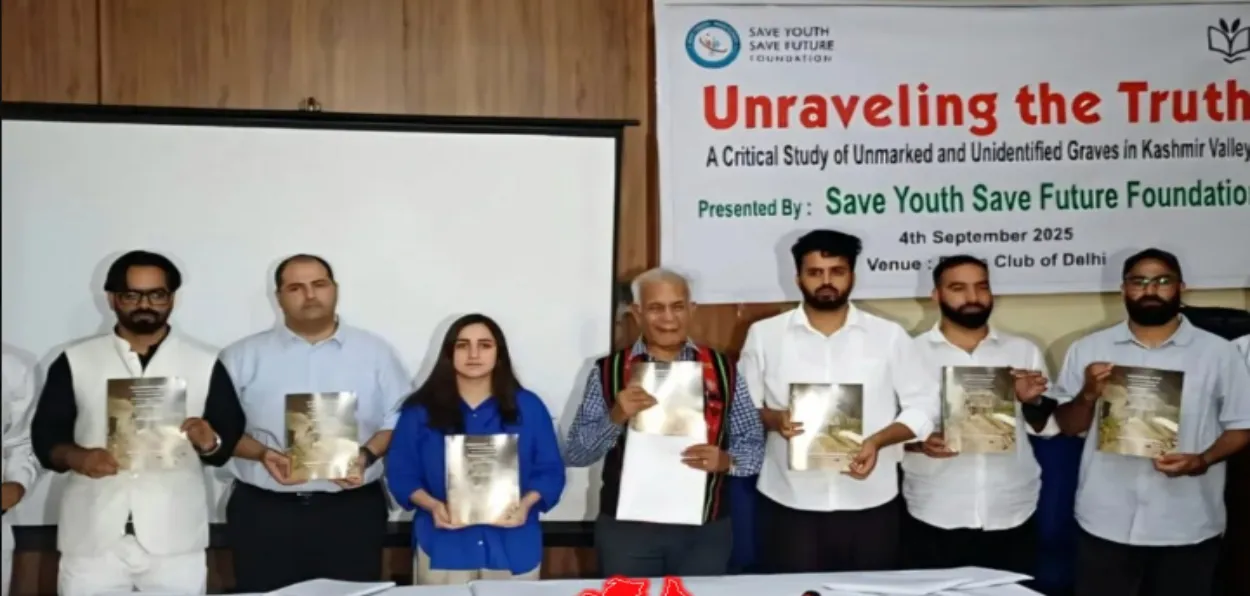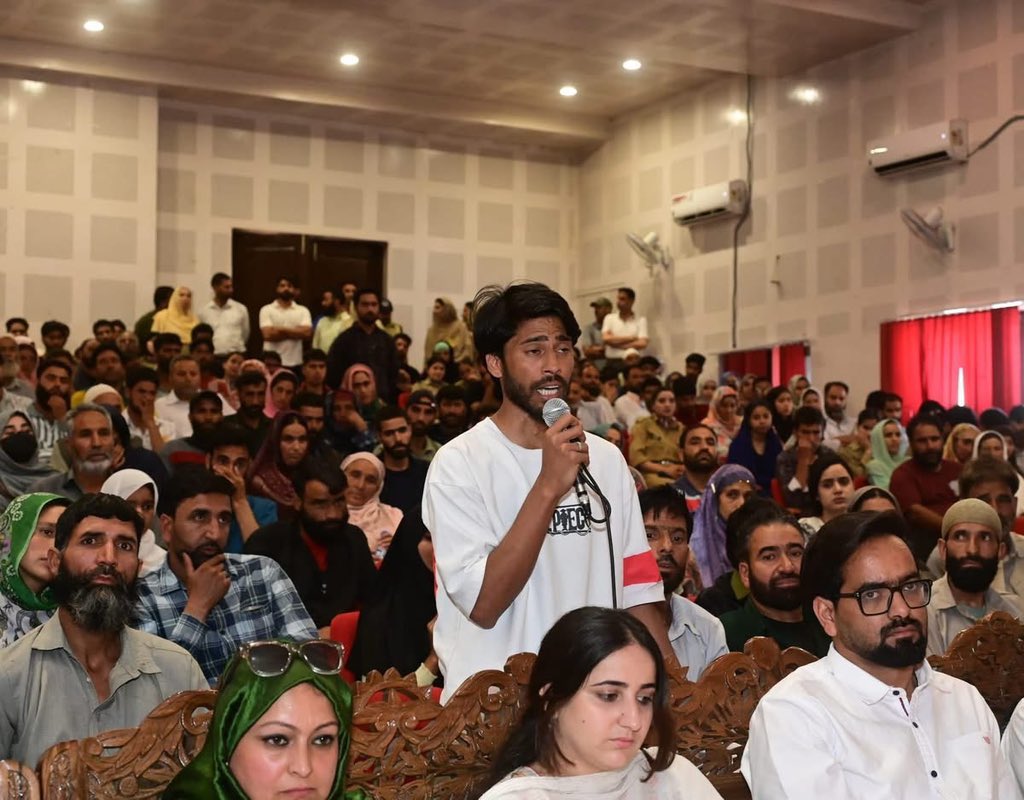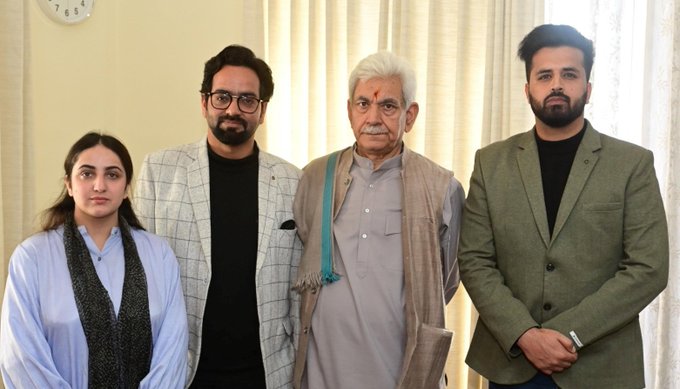
Aasha Khosa/New Delhi
A majority of the unmarked graves in Kashmir that have been used as 'evidence' of Indian forces’ atrocities in Kashmir, and to fuel secession and anger among the local youth, are those of foreign mercenaries – mainly Pakistanis - who were sent across the border to buff up violence.
This has been documented in a ground study, “Unraveling the Truth: A critical study of the unmarked and unidentified graves in Kashmir Valley,” by the Kashmir-based Save Youth Save Future Foundation (SYSFF). The Foundation, led by Wajahat Farooq Bhat, a former stone pelter, has been working on the deradicalization of youth, drug de-addiction and fostering peace and reconciliation in Kashmir.
It may be mentioned that SYSFF was involved in raising the issue of and collecting information about Kashmiri Muslim families whose members were killed by terrorists, and they continued to face social ostracism and the indifference of authorities all these years. Recently, the government took cognizance of their plight and gave job letters to the next of kin of some 400 victims.

An unmarked grave in cemetery in Kashmir
The report is based on a six-year study of records on 373 graveyards and 4,056 'unmarked' graves across central and northern Kashmir’s Kupwara, Baramulla, Bandipora, and Ganderbal districts. This belt was a major infiltration and exfiltration route of local and mercenaries for and after receiving arms training in arms use and sabotage in the POK for carrying out terror activities in Jammu and Kashmir.
The Kashmiri researchers documented the testimonies of the grave diggers, rummaged through the records of graveyards, Police FIRs, families of the dead militants, and other eyewitnesses for the study.
According to the report, 91 percent of the graves in these graveyards are of terrorists – 2493 (61%) of mercenaries and 1208 of the local militants. Only 276 graves remain unidentified or unmarked, and the report has recommended the DNA analysis of the unidentified graves to ascertain the identity of the dead.
 A family member of victim of terrorists' speaking at a function in Baramulla
A family member of victim of terrorists' speaking at a function in Baramulla
“A generation of Kashmiris has grown nursing the feeling that the security forces killed locals randomly and their graves are unmarked,” said one of the persons who was involved in conducting the study.
“They hold it against the security forces and India. Our generation has the right to know the truth about everything that comprised the conflict of three decades, including the reality of the unmarked graves.”
The report says the “discourse around unmarked and unidentified graves in Jammu and Kashmir has long been shaped by polarized narratives that often fail to capture the full complexity of the conflict. Unlike mass grave situations in post-conflict societies like Iran, Bosnia, or Rwanda, where state-led repression was a defining cause, the Kashmir context is different.
“Here, the existence of unmarked or unidentified graves is deeply tied to the operational realities of an ongoing militancy, cross-border terrorism, and counter-militancy dynamics rather than any singular, systematic policy of repression.”

A workshop against drug abuse organised by SYSFF
The report points out that the militants, especially those infiltrating from across the Line of Control, frequently carried no identification.
However, at times, they carried assumed or code names given by the ISI, Pakistan's spy agency, which are of no use in identifying them..
Security forces often had little choice but to carry out burial procedures. However, over time, advocacy groups and international organizations reframed these graves as symbols of systematic human rights violations.
This discourse influenced public perception and imagination as the purported symbol of the Indian state's excessive human rights violations within Kashmir, but also shaped how the international community viewed the conflict.
“This narrative has long fueled secessionist sentiment in Kashmir and continues to sustain the conflict today.”
The report says that the secessionist elements used the narrative to generate animosity among ordinary Kashmiris, many of whom were previously unaware of the deeper dynamics of the conflict.
 SYSFF members Anika Nazir, Mudasar Dar and Wajahat Farooq Bhat with LG Manoj Sinha
SYSFF members Anika Nazir, Mudasar Dar and Wajahat Farooq Bhat with LG Manoj Sinha
Pointing out a pattern in Pakistan’s plan, the report says Pakistan disowned those whom it sent to Kashmir to fight its proxy war after Indian forces killed them.
It says that the purpose of not owning its ‘jihadis’ was a deliberate ploy by Pakistan and its sympathizers and frontal organization (read Hurriyat Conference) in the Valley to constantly blame Indian forces and to create a narrative that security forces kill 'innocent people' to create dissatisfaction and unrest by inciting the locals, especially youth, to join militancy.
This report has tried to bring clarity to an issue that has caused confusion and debate both within India and internationally. The Indian state has often been accused of human rights abuses because of this perception.
The perception of ‘unmarked graves’ influenced public perception in Kashmir and also shaped how the international community viewed the conflict.
“This narrative has long fueled secessionist sentiment in Kashmir and continues to sustain the conflict today; secessionist elements and others have actively capitalized on it to generate animosity among ordinary Kashmiris, many of whom were previously unaware of the deeper dynamics of the conflict.”
ALSO READ: After 30 years, Kashmir's forgotten terror victims to get justice
“While we do not rule out the possibility that some civilians may have died in crossfire or other incidents, most of the graves documented here either belong to unidentified foreign militants or local militants,” the report says.
The SYSFF says it has plans to extend the research study to other areas of J&K.
